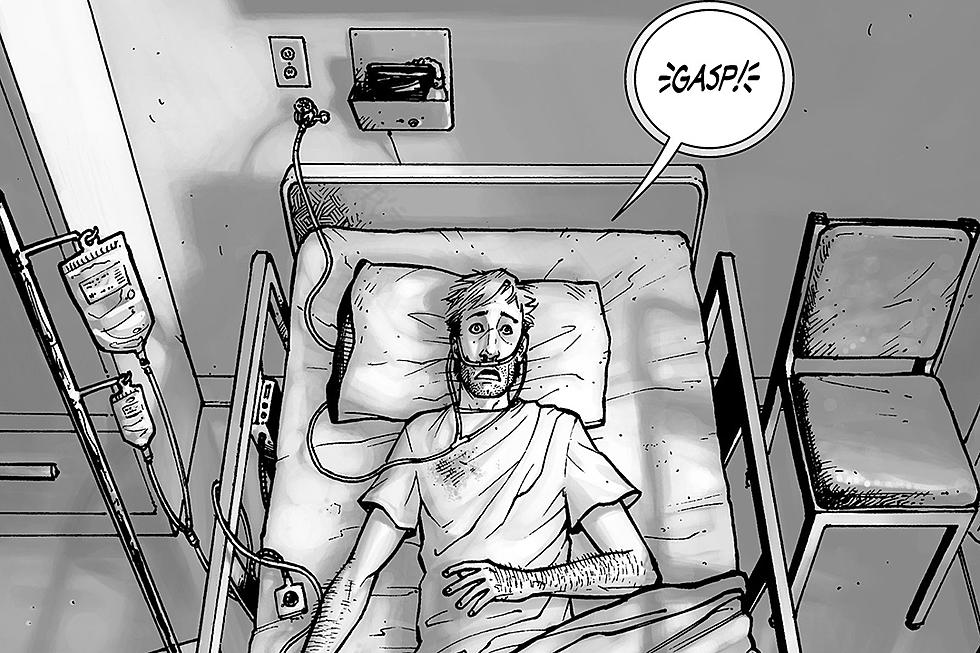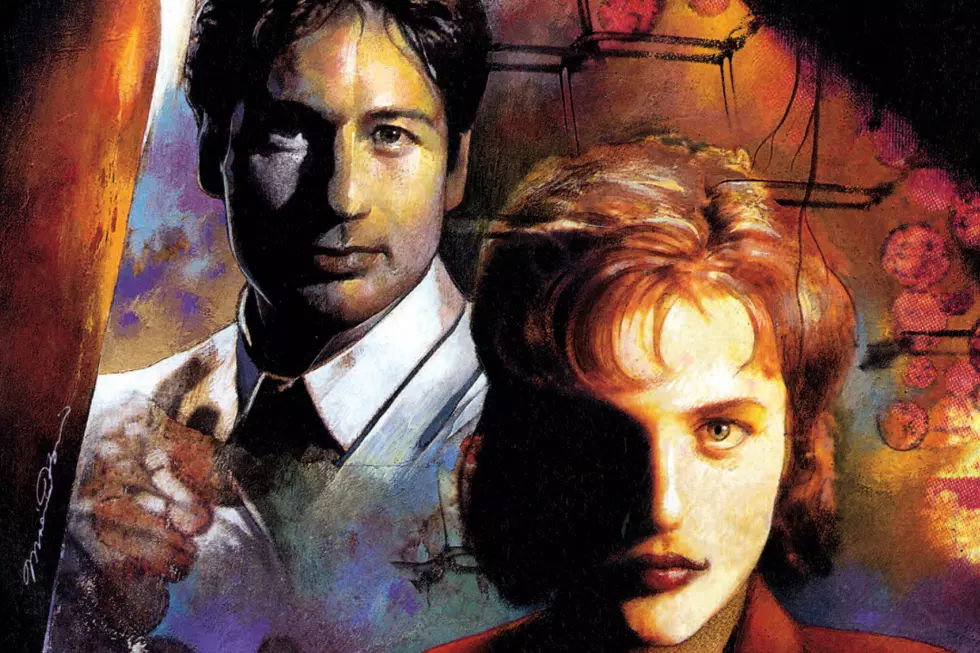
The X-Files Cold Cases #4: ‘Firebird’
From 1995 to 1998, Topps Comics published a comics tie-in to The X-Files that featured original stories and, among other artists, some of Charlie Adlard‘s earliest US art. With Agents Fox Mulder and Dana Scully returning to television in January, we’re revisiting this classic series and highlighting some of the best stories it had to tell.
This week, an epic three-part story with enough scale that it could have been a movie, tying in to one of the most popular unexplained events of the 20th century. But does this story break the X-Files' rules?
The X-Files #4-6: "Firebird"
Writer: Stefan Petrucha
Artist: Charles Adlard
Cover Art: Miran Kim
Original Publisher: Topps Comics
Current Publisher: IDW Publishing
The X-Files Created by Chris Carter
Space is weird and terrifying, even without any aliens in it.
The same absence of nearly anything that makes it so hostile to life as we know it means that there's nothing to actually slow down something that's on its merry way, short of a source of gravity like our planet Earth. So a large enough meteor that won't burn up in the atmosphere can hit with terrifying impact, and one of the most noteworthy impacts our planet's experienced in known history is the Tunguska Event.
The impact of the event miraculously resulted in no fatalities because it had the fortune to strike the middle of nowhere, but it knocked down trees over an area of two thousand square kilometers. It's one of those events that any fictional universe with a hint of the dramatic and the paranormal just has to put its own spin on, and The X-Files was no different, mining enough material from the event to fill up a rare three part story.
It kicks off when the remains of a dead body, being transported in a truck, are recovered from an accident and revealed to be carbon dated to several thousand years – and the body belongs to a scientist born in 1960s Russia, investigating the Tunguska event and dying under mysterious circumstances. Since this is impossible, this is in turn an X-File.
The extra length lets Stefan Petrucha write a story that takes the reader from the corridors of Washington, D.C. to the aforementioned Tunguska Event crater to the middle of New Mexico, and brings in a large and well fleshed out cast of characters, including an ancient eyewitness to Tunguska and a couple of rebellious Native American filmmakers. The threat that eventually surfaces threatens every living thing in an entire state. More than anything, Firebird is, and feels, big. It could have been an X-Files movie, had the stars aligned just right (so to speak.)
Charlie Adlard makes use of the "unlimited budget" of comics well, giving us a glimpse of a monster that is truly alien and that doesn't behave like any of the so-called Greys from the show – and it doesn't have to, because once you've accepted the idea of one alien race, why not more than one? This lets the comic touch on the overarching conspiracy within the walls of power with regards to alien life on Earth, while keeping what the alien itself wants, and what it can do, a mystery that gives the plot its urgency.
Careful visual storytelling means that recurring motifs, not always a possibility in a short story, can stretch and take up room. There is a recurring visual element that's lent a special and mysterious weight, and there are some well-rendered page-turn parallels, like this one:
Leading into this one:
One downside to the unrestrained, unlimited budget, however, is that if you draw a weird alien creature, you want to see your cast interact with it at some point. Scully gets a very good look at the alien in question, and it's not something that's easily explained away within this story, breaking one of the show's unwritten rules of never giving proof one way or the other when it came to paranormal events. This is mitigated somewhat by this being one link in the first 12 issues' "season-long metaplot" – the resolution of which we'll talk about in a future installment – but only somewhat.
Still, at the end of season one, Scully did hold an alien fetus in her hands, and retained her skepticism in the face of that. And the aforementioned metaplot plays around greatly with the unreliability of eyewitness testimony, so it's not that egregious a break from the show's ethos.
What's interesting about Firebird is how it walks the tightrope between a world under tight control, and what happens when that control is lost. The conspiracists that Mulder meets immediately downplay their importance even as they demonstrate it; the plot is set into motion by either random chance or some kind of force with motives that are never addressed. The monster is tied to nuclear fusion and as the danger increases, the specter of resorting to nuclear weapons is raised --- and there's few scarier things in this world than that.
It wasn't so long ago that the thought of having major cities wiped off the map --- in a war between the U.S., where the series is set, and Russia, which is the origin of this story's mystery --- was a daily fact of life. If not for the actions of a canny Russian officer, global thermonuclear war could have broken out in 1983, all over a flaw in the satellite network of the Soviet Union --- an accident as random as the one that kicks the whole plot off.
Fundamentally, the story of Firebird gives a sense that whatever's pulling the strings is not just unknown, but unknowable, and that random, horrible death is always a possibility and no one's ever fully safe. The truth may be out there, but it may be as deadly as the vacuum of space.
More From ComicsAlliance

![Rogues’ Gallery: Who Is The Ultimate ‘Walking Dead’ Villain? [Poll]](http://townsquare.media/site/622/files/2017/01/TWD-Vote.jpg?w=980&q=75)







